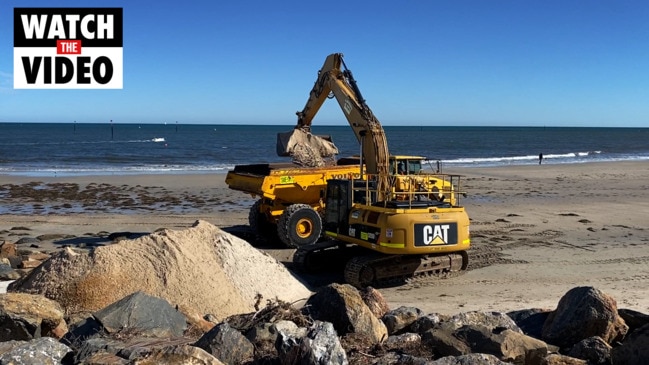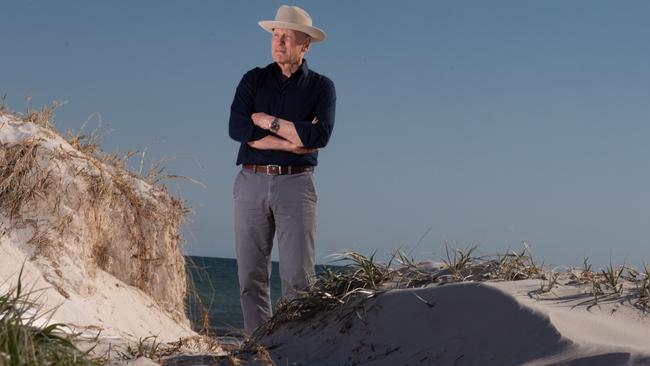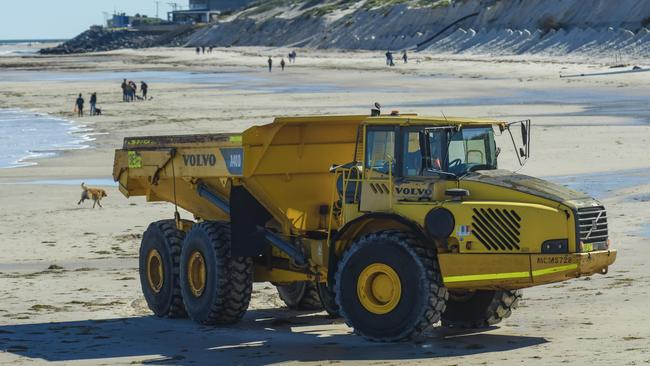Satellite images show Semaphore Beach has receded by 70m in past 30 years
Adelaide’s beaches are eroding at a record rate, with a leading geologist backing one solution to the years-long problem.

SA News
Don't miss out on the headlines from SA News. Followed categories will be added to My News.
One of Adelaide’s most popular beaches has shrunk by 70m in the past 30 years because of an increase in significant storms, a leading geologist says.
Satellite images from Geoscience Australia’s Digital Earth Australia Coastlines data set shows the Semaphore beach shoreline has receded by 70m since 1993, with current erosion of up to 5m per year.
Largs Bay beach has receded by 30m in the same period.
Port Adelaide Enfield councillor and geologist Peter McGregor said erosion was affecting most northern beaches in Adelaide due to an increased frequency of major storms.
“The storm frequency is increasing,” Cr McGregor, who has worked as a geologist across the globe, said.
“They’re no two-to-five-year storms, there’s actually one every eight months.”
He said “one-in-10-year storms” were now occurring every two to three years.
“That’s why those beach reversals happen,” he said.
“Our beaches are eroding and it’s due to climate change and that climate change has affected all beaches.”

The state government this month released a shortlist of options to combat beach erosion by moving sand from Semaphore or Largs Bay to West Beach after an independent review.
The options included dredging, pumping or sandcarting, with a pipeline to move the sand expected to cost up to $155m.

Dredging sand from the seabed would cost between $45m and $100m over 20 years, while keeping the current method of carting sand with trucks and excavators would cost between $100m and $110m over the next two decades.
But Cr McGregor said the sand should not be taken from beaches like Semaphore and Largs Bay, which were already severely eroded.
“The shoreline has moved landward constantly from 1993,” Cr McGregor said.
“The coastline is receding.
“It’s going backwards.”
Independent Advisory Panel chairman Mark Searle said some beaches would erode to rock and clay.
“As there is only limited new sand naturally entering the system, Adelaide’s beaches
have to be managed to protect homes, businesses and infrastructure from storms, and
to provide sandy beaches for our community to enjoy,” Mr Searle said.
“It is very important to the success of the review that it is informed by an understanding of what matters most to the community.”
Cr McGregor said dredging was the most “flexible” option to combat the erosion.
He said dredging was the lowest cost option, had minimal community disruption and had proved effective overseas, particularly in Holland.

“We do not favour the pipeline as an option,” Cr McGregor said.
The state government last year scrapped plans for a $38.9m pipeline to pump sand from Semaphore South to West Beach.
Save Our Shores member Warwick Norman said the erosion at Semaphore and Largs Bay was “incredibly concerning”.
“The Lefevre Peninsula is sinking … and that’s cause for concern,” Mr Norman said.
“People flock to these beaches and they don’t want to see them destroyed.
“It’s incredibly concerning.”
Mr Norman said the protest group was “100 per cent opposed” to a pipeline.
South Australians can provide online feedback on the proposed options until 5pm October 15.




